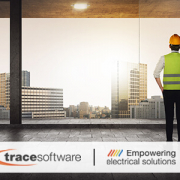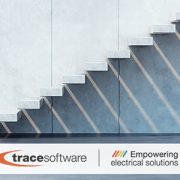Myths & Misconceptions About Electrical Safety
/0 Comments/in Blog, News/by RossanaThe objective of the management of electrical risk is to reduce this risk to a minimum according to shared standards and to prevent potential negative effects. In the electrical engineering industry there are many situations in which a real danger may occur, given that the workers in the industrial plant must manage electrical equipment.
The competent legislations must therefore manage multiple aspects to guarantee:
– the correct use of all electrical equipment, considering the environmental and operational conditions.
– the correct use of materials.
– the maintenance process, aimed at ensuring the safety of the work environment over time.
– the adoption of specific protection measures in the field of worker safety, including in this procedure, equipment and professional training.
However, as in every area, even in the electrical systems industry there are many myths and misunderstandings that are handed on to the work environment, which in the end is the place where the experience is formed.
The aim of this article is to promote the correct information in the electrical engineering industry. The original article was written by James R. White – Senior Member IEEE, to which we refer to summarize the essential parts:
- “The incident energy is so high you can’t even walk into the powerhouse without PPE.” Another common misconception is “You need arc flash PPE to just walk through a room with operating electrical equipment”. It is not necessary to wear arc-rated PPE if you are near an energized equipment. Even if the risk exists, does not create the need for arc-rated PPE, unless you are interacting with the equipment in a manner that could cause failure. This is because the Electrical equipment rated under 600 volts that has been properly installed in compliance with all the standards, does not present an electrical arc flash hazard, unless it is operated in a manner that could cause failure.
- Safety regulations are not like construction standards (IEC, NEC, …), where once the facility is built under the current codes and standards it does not require updating, unless the facility undergoes a major renovation. Safety regulations enact safe work practices that evolve and need to be continually applied.
- Experience counts, but not always. The statistics confirm this data in the field of electrical system safety. The idea that only through experience can be considered a skilled worker is not true. Being qualified means possessing a lot of technical skills as well as skills and knowledge in terms of security.
- An obvious myth is the totally unfounded belief that only people whose title includes “electrician” or similar need training. According to OSHA – the administration of occupational safety and health in the USA – training is essential for all those working in the field, being exposed to risk.
- Hospitals have less competence when talking about victims of electric shocks. The number of victims for electric shock is lower than that for common accidents.
- If you touch a 20A circuit breaker, you will receive a current of 20A throughout your body. This is a phrase that is perhaps repeated by the team leaders to ensure that everyone works in compliance with the rules relating to security. But once one realizes his falsehood, the opposite effect is irreparably obtained. It is quoted: “Only the current allowed by the law of OHM will flow through a person. That current is dictated by the tension divided by the resistance of the body. This resistance is generally recognized to be around 1,000 Ω (6) for the average man. There are factors that will tend to change this value or down, such as bone mass, walking surface, shoe material, wet environment, etc., but it is a good number to begin with. At 120 V and with a resistance of 1,000 Ω in the circuit, current flow would be limited to a maximum of 120 mA. This current value could certainly be lethal and should not be overlooked as harmless, but it should also be used to instruct new workers in the electric field for the real risks of their work” .
- Grounding is useless. There is nothing more wrong than such a statement. Grounding is a fundamental component of electrical safety.
Safety is a fundamental principle, especially when we talk about electrical safety. Effective training, compliance of the equipment with the standards, the correct use of the materials, maintenance and use of own knowledge can help.
elec calc™ is Trace Software International tool for the smart calculation of low voltage and high voltage electrical installations in real-time, complying with various international standards and able to guarantee maximum productivity and safety.
Contact: commercial@trace-software.com
Want to know more?
Tracesoftware – Empowering electrical solutions.
Check out: Webinars eSHOP Sales
Maturity Model and BIM Levels
/0 Comments/in Blog, News/by RossanaBIM is becoming a global language for the infrastructure and construction sector, enabling greater collaboration and movement of capabilities across borders. Trace Software International is at the forefront of integrating its electrical calculation with BIM. With our exciting partnership our of software elec calc™ and BIM & CO – produces a powerful combined software for BIM.
The Building Information Modelling (BIM) has been a growing, valuable tool in the hands of anyone who works in the building industry. That is why our elec calc™ BIM solution meets the changing demands within the construction industry. This a module that integrates calculation software in BIM with the following iterative processes: Facilitating the flow between a 3D model and the electrical sizing and calculation that all meet the IFC format standards.
What is BIM?
Based on this information, the full life-cycle of a building, from initial conception to project completion, can be managed effectively. In that sense, it’s an indispensable part of the decision-making process.
BIM refers to a collaborative method of working which is based on the generation and exchange of data between various project parties on the same project. In our elec calc™ BIM solution it features the ability within installation, to build the one-line diagram from the explorer and also build the one-line diagram from the 3D mock-up.
It provides a powerful way to access the BIM objects and stay current with this growing trend in construction design.
Architecture, engineering, and construction (AEC), for a long time these industries have sought out to increase productivity and quality, while at the same time decrease costs as well as project delivery time, hence using BIM gives the best potential in reaching these goals.
BIM simulates the construction project in a virtual environment. Just as in our elec calc™ BIM solution allows you to create a one-line diagram of electrical an installation from the BIM model and define the cable routing (calculating lengths, adding cables as objects).
The key benefit of a BIM is its accurate geometrical representation of the parts of a building, in an integrated data environment. Some great features of elec calc™ BIM include IFC Explorer, your electrical objects are recognized from IFC data and interactions between Explorer, 3D Viewer and elec calc™ one-line diagram, identifying components in real time between your 3D Viewer and the one-line diagram.
The BIM Maturity Model
The BIM maturity model describes levels of maturity with regards to the ability of the construction supply chain to operate and exchange information.
The BIM model levels are applied to the entirety of the project scenario however a company may claim to operate at Level 2 but, can only operate at Level 1 which is very normal as companies or organisation mature on different timescales.
There are different levels of shared collaboration in a construction project. Those are known as BIM maturity levels. As we proceed through the levels, the collaboration between the various sides is increasing. At the time being, there are four distinct BIM maturity levels.
· BIM Level 0 (Low Collaboration)
It’s the simplest step of the information generating process. It doesn’t practically involve any level of cooperation. Level 0 is essentially the use of computer aided design (or CAD tools) to create drawings and drawn elements using IT software.
· BIM Level 1 (Partial Collaboration)
Within Level 1, we progress from CAD to generate suites of 2D information, followed by non-federated 3D models.
· BIM Level 2 (Full Collaboration)
The focus of interest on this level is the way in which the information is shared across the various project members.
· BIM Level 3 (Full Integration)
BIM Level 3 is the goal for the construction industry. Its main point is the attainment of full integration (iBIM) of the information in a cloud-based environment.
The maturity model is also used to define the supporting infrastructure required at each level of capability.
BIM Dimensions
A common misconception around BIM relates with its dimensions. The dimensions are different than the BIM maturity levels. BIM dimensions are inextricably connected to the type of data that can become available through the process. They can be found both in BIM Level 2 and Level 3.
There are four types of BIM dimensions:
3D: It refers to 3D generated drawings.
4D: It is linked to time management.
5D: It concerns data that relates with the cost of the project.
6D: It’s a dimension dedicated to the life cycle management of a building.
What can BIM working do, that conventional working can’t?
elec calc™ BIM allows information to be shared by different participants along the different stages of design, construction and operation. From the aspect of cable routing you have the ability for the calculation of cable lengths, and of the added cables as objects in the layout.
Model checking could be described as the detailed process of examining a system model on if it is meeting certain criteria. It’s understandable that model checking has tremendous importance for BIM. Model checking is a central element in computer science and by extension in BIM. With elec calc™ BIM, 3D model updates are available, import a review of IFC and receive a notification of the changes in the installation one-line diagram – Export IFC and BCF.
There is no question that the concept of collaborative working has become more popular over the years and is now becoming the standard practice for many countries and companies.
Want to know more?
Tracesoftware – Empowering electrical solutions.



